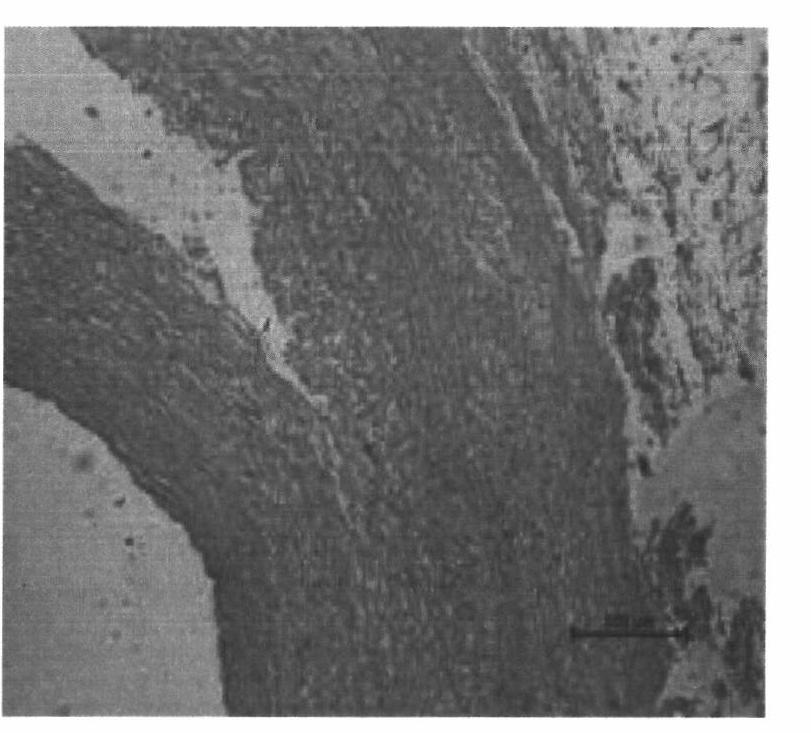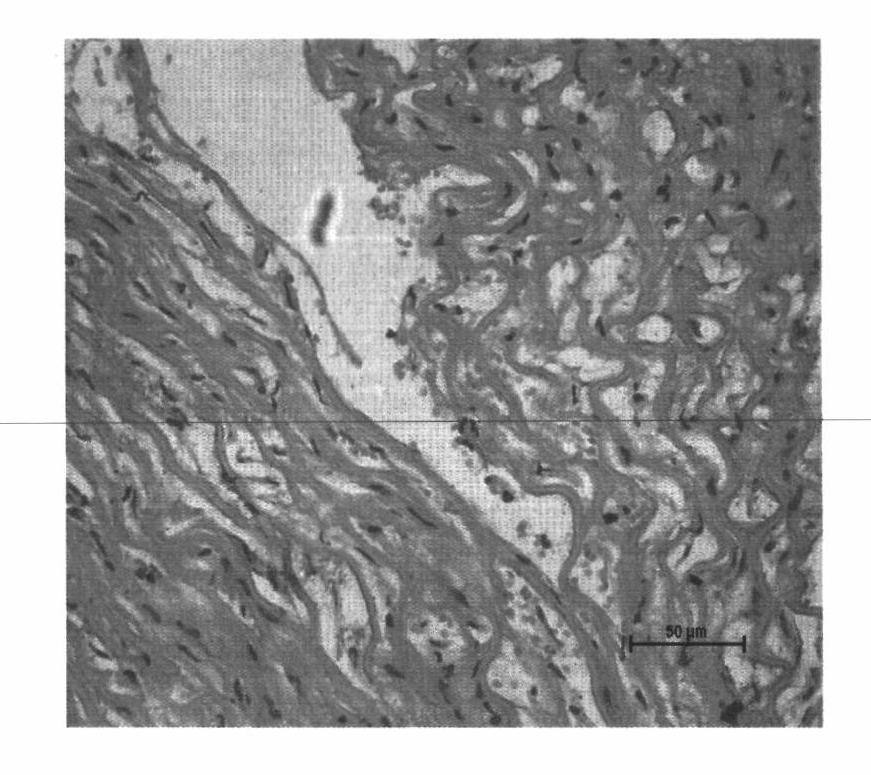Establishment method of animal model for acute Stanford A-type aortic dissection (AD) accompanied with MODS (multiple organ dysfunction syndrome)
A technology for aortic dissection and animal model, applied in animal husbandry and other directions, can solve the problems of limited tear length of dissection, low success rate of dissection, and no related records of accompanying MODS.
- Summary
- Abstract
- Description
- Claims
- Application Information
AI Technical Summary
Problems solved by technology
Method used
Image
Examples
Embodiment 1
[0054] Example 1 Method for establishing an animal model of acute Stanford type A aortic dissection with MODS of the present invention
[0055] 1 material
[0056] 1.1 Experimental animals
[0057] There were 18 healthy adult Beagle dogs, both male and female, weighing 8-12kg, with an average of 8.95±0.72kg. Before the operation, each animal was kept in a separate cage at a room temperature of 23~25℃, with free food and water, 12 hours of light / darkness. The dogs were provided by the West China Clinical School of Sichuan University / West China Hospital Traditional Chinese Medicine Safety Evaluation Center, and were bred by the animal room of the West China Clinical School of Sichuan University / West China Hospital Experimental Animal Center according to the requirements of experimental animals.
[0058] 1.2 Main experimental reagents and drugs
[0059] 1) Heparin Sodium (Shanghai Biochemical Pharmaceutical Factory)
[0060] 2) Penicillin Sodium (North China Pharmaceutical)
[0061] 3) Adr...
Embodiment 2
[0197] Example 2 The use of classic drugs for treating acute Stanford type A aortic dissection with MODS to verify the animal model of the present invention and initially establish a related drug screening system
[0198] ①. Establish an animal model of acute Stanford A aortic dissection with MODS according to the method described in Example 1.
[0199] ② Apply the classic drugs and candidate drugs for the treatment of acute Stanford A aortic dissection with MODS to animal models;
[0200] ③Compared with classic drugs for the treatment of acute Stanford type A aortic dissection with MODS, observe the influence of candidate drugs on acute Stanford type A aortic dissection with MODS, as well as the improvement of symptoms and indicators, and score and evaluate potential treatment The drugs for acute Stanford A-type aortic dissection with MODS also verify the feasibility of the animal model of the present invention for drug screening.
[0201] After the evaluation of step c, the classic ...
experiment example 3
[0203] Experimental example 3 The protective effect of rhubarb on organs with acute Stanford A aortic dissection with MODS
[0204] 1 material
[0205] 1.1 Experimental animals
[0206] There are 12 healthy adult Beagle dogs, both male and female, weighing 8-12kg, with an average of 8.88±0.80kg. Before the operation, each animal was kept in a separate cage at a room temperature of 23~25℃, with free food and water, 12 hours of light / darkness. The dogs were provided by the West China Clinical School of Sichuan University / West China Hospital Traditional Chinese Medicine Safety Evaluation Center, and were bred by the animal room of the West China Clinical School of Sichuan University / West China Hospital Experimental Animal Center according to the requirements of experimental animals.
[0207] 1.2 Main experimental reagents and drugs
[0208] 1) Heparin Sodium (Shanghai Biochemical Pharmaceutical Factory)
[0209] 2) Penicillin Sodium (North China Pharmaceutical)
[0210] 3) Adrenaline (Shan...
PUM
 Login to View More
Login to View More Abstract
Description
Claims
Application Information
 Login to View More
Login to View More - R&D
- Intellectual Property
- Life Sciences
- Materials
- Tech Scout
- Unparalleled Data Quality
- Higher Quality Content
- 60% Fewer Hallucinations
Browse by: Latest US Patents, China's latest patents, Technical Efficacy Thesaurus, Application Domain, Technology Topic, Popular Technical Reports.
© 2025 PatSnap. All rights reserved.Legal|Privacy policy|Modern Slavery Act Transparency Statement|Sitemap|About US| Contact US: help@patsnap.com



